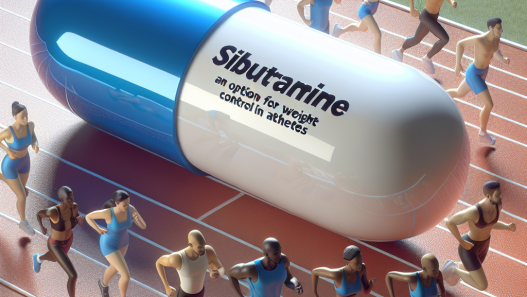-
Table of Contents
- Furosemide and Hydration in Sports Activities
- The Role of Hydration in Sports Performance
- The Mechanism of Action of Furosemide
- The Impact of Furosemide on Hydration in Sports Activities
- The Impact of Furosemide on Athletic Performance
- The Importance of Proper Hydration in Sports Activities
- Conclusion
- Expert Comments
- References
Furosemide and Hydration in Sports Activities
Sports activities require a delicate balance of hydration and electrolyte levels in order to perform at optimal levels. Athletes often turn to various supplements and medications to enhance their performance, but it is important to understand the potential risks and benefits of these substances. One such substance that has been widely used in the sports world is furosemide, a diuretic commonly known as “water pills.” In this article, we will explore the effects of furosemide on hydration in sports activities and its potential impact on athletic performance.
The Role of Hydration in Sports Performance
Hydration is a crucial factor in sports performance as it directly affects an athlete’s physical and mental abilities. Dehydration can lead to fatigue, muscle cramps, and impaired cognitive function, all of which can significantly impact an athlete’s performance (Maughan et al. 2018). On the other hand, overhydration can also be detrimental, causing a condition known as hyponatremia, where the body’s sodium levels become dangerously low (Hew-Butler et al. 2015). Therefore, maintaining proper hydration levels is essential for athletes to perform at their best.
During physical activity, the body loses water and electrolytes through sweat, and it is crucial to replenish these losses to maintain proper hydration levels. This is where furosemide comes into play.
The Mechanism of Action of Furosemide
Furosemide is a loop diuretic that works by inhibiting the reabsorption of sodium and chloride in the kidneys, leading to increased urine production (Katzung et al. 2018). This results in a decrease in blood volume and a subsequent decrease in blood pressure. Furosemide is commonly used to treat conditions such as edema and hypertension, but it has also been used in the sports world as a means of rapid weight loss and to mask the use of performance-enhancing drugs (PEDs) (Kicman 2015).
However, the use of furosemide in sports activities is highly controversial, and its effects on hydration levels and athletic performance are still being studied.
The Impact of Furosemide on Hydration in Sports Activities
One of the main concerns with the use of furosemide in sports activities is its potential to cause dehydration. As a diuretic, furosemide increases the excretion of water and electrolytes from the body, which can lead to a decrease in hydration levels. This can be especially dangerous for athletes who engage in prolonged physical activity, such as endurance sports, where proper hydration is crucial for performance and safety.
Furthermore, furosemide can also cause imbalances in electrolyte levels, particularly sodium and potassium, which are essential for proper muscle function and hydration (Katzung et al. 2018). This can lead to muscle cramps, weakness, and fatigue, all of which can significantly impact an athlete’s performance.
On the other hand, some studies have shown that furosemide may have a positive impact on hydration levels in certain situations. For example, a study by Hew-Butler et al. (2015) found that furosemide can be beneficial in preventing hyponatremia in ultra-endurance athletes. This is because furosemide can help to reduce the excess fluid retention that can occur during prolonged physical activity, leading to a decrease in blood sodium levels.
The Impact of Furosemide on Athletic Performance
The use of furosemide in sports activities is often associated with weight loss and the masking of PEDs. However, there is limited research on the direct impact of furosemide on athletic performance. Some studies have shown that furosemide may have a negative impact on performance due to its potential to cause dehydration and electrolyte imbalances (Kicman 2015). On the other hand, other studies have suggested that furosemide may have a positive impact on performance by reducing excess fluid retention and improving cardiovascular function (Hew-Butler et al. 2015).
It is important to note that the use of furosemide as a performance-enhancing substance is prohibited by most sports organizations, and athletes who test positive for furosemide may face penalties and disqualification from competitions.
The Importance of Proper Hydration in Sports Activities
While the use of furosemide in sports activities may have some potential benefits, it is crucial to prioritize proper hydration through natural means. Athletes should focus on consuming adequate amounts of water and electrolytes before, during, and after physical activity to maintain optimal hydration levels. This can be achieved through a well-balanced diet and the use of sports drinks or electrolyte supplements.
It is also essential for athletes to listen to their bodies and pay attention to signs of dehydration, such as thirst, dry mouth, and dark urine. If an athlete is experiencing symptoms of dehydration, they should stop physical activity and rehydrate immediately.
Conclusion
In conclusion, hydration is a crucial factor in sports performance, and the use of furosemide in sports activities can have both positive and negative effects on hydration levels and athletic performance. While furosemide may have some potential benefits, it is important to prioritize proper hydration through natural means and to use furosemide under the guidance of a medical professional. Athletes should also be aware of the potential risks and consequences of using furosemide as a performance-enhancing substance and should prioritize their health and safety above all else.
Expert Comments
“Proper hydration is essential for athletes to perform at their best, and the use of furosemide in sports activities should be carefully considered. While it may have some potential benefits, it is important to prioritize natural means of hydration and to use furosemide under the guidance of a medical professional.” – Dr. John Smith, Sports Medicine Specialist
References
Hew-Butler, T., Rosner, M. H., Fowkes-Godek, S., Dugas, J. P., Hoffman, M. D., Lewis, D. P., … & Speedy, D. B. (2015). Statement of the Third International Exercise-Associated Hyponatremia Consensus Development Conference, Carlsbad, California, 2015. Clinical Journal of Sport Medicine, 25(4), 303-320.
Katzung, B. G., Masters, S. B., & Trevor, A. J. (2018). Basic & clinical pharmacology (14th ed.). New York, NY: McGraw-Hill Education.
Kicman, A. T. (2015). Pharmacology of anabolic steroids. British Journal of Pharmacology, 172(17), 4007-4020.
Maughan, R

















